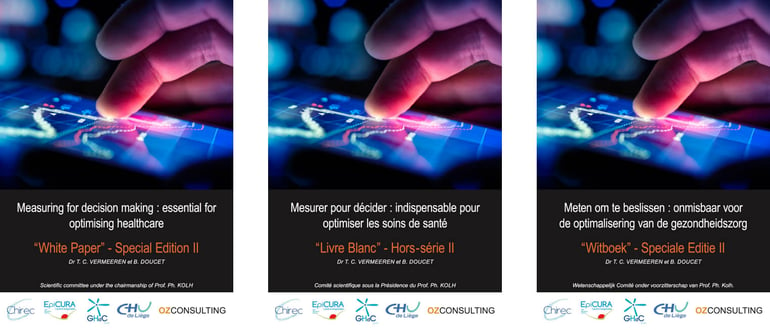Innovation in healthcare comes mainly from two sources. First of all, there are constraints played by the public authorities in funding the sector, which is bound by a series of rules to better drive the costs of ‘efficiency’ for hospitals and their processes. Second, there’s the profusion of connected objects: Smart Health is becoming a reality.
Constraints have made performance analysis unavoidable: The hospitals are being nudged forward by external accreditation bodies that evaluate the quality of care, performance levels, compliance with established standards and, finally, the stability and sustainability of the hospital.
by external accreditation bodies that evaluate the quality of care, performance levels, compliance with established standards and, finally, the stability and sustainability of the hospital.
However, awareness of assistance in decision making, business intelligence or analytics, is still largely restricted to finance departments. There is still a great lack of indicators for the quality of care, patient typology, the attractiveness of the institution, or patient-oriented indicators.
The real value of business intelligence in the area of health lies outside the financial spectrum. The task is to connect financial data with operational and clinical data to create a comprehensive, unified vision.
Furthermore, encouraging the sharing and distribution of information will be fundamental to align all workforce efforts. Walls need to be broken down in order for everyone to take ownership of the figures and indicators. The complexity certainly comes from the enormous number of – and disparity in – the systems and software packages used throughout a hospital
‘Smart health’, with the proliferation of smart probes, sensors, connected objects, fitness devices, and ‘quantified self’, represents the mass of data that has not yet been exploited, but which will be in the future. Although these ‘quantified self’-type devices are still only peripheral to the world of the hospital, in the future they will become an indispensable element or even an aid to the follow-up and ‘assisted steering’ of patients at the institution.
The cognitive automation of diagnostics and recommendations will potentially have a major effect on the structure, organisation and size of hospitals. Observers are already predicting an ‘externalisation’ of the management of entire ranges of pathologies, with the patient being treated externally – either at home or in smaller facilities – by means of telemedicine. Hospitals will become more specialised and will only take on acute or atypical cases. This will significantly change the way in which their ‘performance’ will be defined, managed and evaluated.
Further, these trends are also incitants for hospitals to anticipate the future and use statistical tools to predict the trends of tomorrow.
Innovation in healthcare is in its infancy and leaves plenty of room for improvement in patient experience and financial optimization.
To read more about this, download our free white paper about Innovation in Healthcare (available in English, French and Dutch).



